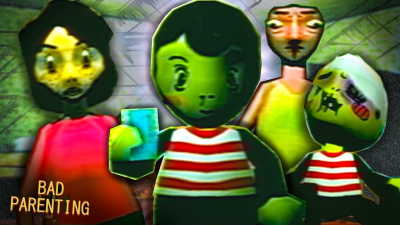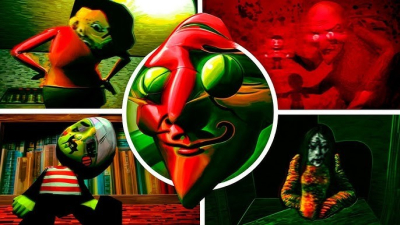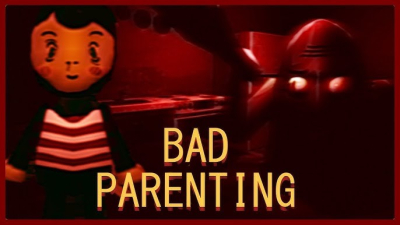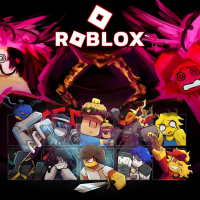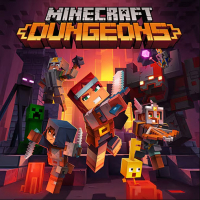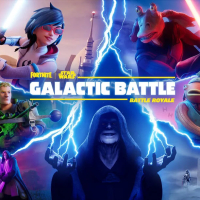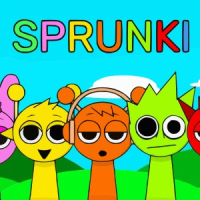Bad Parenting
I remember the exact moment I first booted up Bad Parenting 1: Mr. Red Face. The title alone promised an experience that was far removed from your everyday game, and I was not disappointed. I sat down with an expectation of discovering an unfamiliar, quirky world that would toy with my perspective on daily challenges. From the outset, the game’s eccentricity struck me, and I soon found myself immersed in an environment that balanced comical absurdity with genuine emotional undertones.
The Playful Mechanics That Set the Stage
As I maneuvered through the game’s initial tutorial, it became clear that the developers had taken great care to design gameplay mechanics that were both intuitive and unexpectedly challenging. The controls and interactions were designed to compel the player into a constant state of learning and readjustment. Although at times clumsy, these mechanics drove an engaging rhythm that made every decision feel impactful. Throughout my playthrough, this design made it a memorable and personal journey. I found myself strategizing on the fly while laughing at the sheer unpredictability of how everyday parental dilemmas could transform into epic quests.
Aesthetic Appeal and Artful Narration
The game’s aesthetic is an unexpected fusion of cartoonish vibrancy and surreal reality. Vibrant colors met detailed animations, and from the moment I entered the first scene, I was surrounded by a visual narrative that was as engaging as it was humorous. Every character outline, every background detail, and every subtle change in the environment reflected the absurdities of everyday responsibility eased by whimsical exaggeration. I often paused just to admire how well the art style conveyed both the absurdity and the internal struggles of its titular character, Mr. Red Face. His literal and figurative expressions provided a lens through which the gameplay experience was both heightened and humanized.
Immersive Narrative and Unpredictable Scenarios
My journey through the game was punctuated by a storyline that wasn’t afraid to challenge my understanding of responsibility and familial bonds. The narrative weaved in complex emotional themes with ludicrous scenarios, reflecting the trials and tribulations of modern parenting but with a twist that invited satire and reflection. There were moments when I genuinely empathized with the plight of Mr. Red Face, even as he stumbled through makeshift solutions and unconventional approaches to resolve domestic issues. The narrative constantly balanced sudden bursts of humor with unexpected depths of character development, ensuring that I was never entirely sure if I was laughing at the absurdity or relating a bit too closely to the struggles on screen.
Character Development Through a Comedic Lens
For me, one of the most fascinating elements in Bad Parenting 1: Mr. Red Face was its character development. The protagonist is portrayed with layers of personality that range from the comically inept to the surprisingly tender-hearted. As I progressed through the game, I found that the humor was never at the expense of empathy; each challenge Mr. Red Face faced was reflective of everyday struggles that many can recognize. The way the game brought these characters to life—through exaggerated expressions, cleverly designed dialogue, and unexpected role reversals—ensured that every interaction was an opportunity to delve deeper into the narrative fabric the developers had so meticulously spun.
Humor as a Tool for Emotional Engagement
The humorous tone of the game is one of its most distinctive attributes. I appreciated how the game used humor not simply for entertainment but as a means to explore more profound emotional landscapes. Jokes, satire, and playful interactions between the characters were woven seamlessly with moments that touched on genuine emotional stress and parental anxiety. There were instances where, after a particularly outrageous mishap, I found myself smiling at the clever commentary on modern life. This blend of levity and reflection made every moment in the game unpredictable and kept me curious about what would come next.
Interactive Puzzles and Dynamic Challenges
The gameplay was not simply about traversing a quirky world; it demanded active problem-solving and decision-making. I encountered puzzles that challenged my perception of normalcy, weaving techniques of timing, spatial awareness, and creative thinking into the fabric of the game. Some levels required swift decisions in high-pressure, yet absurd situations, while others lent themselves to more methodical, patient reasoning. What fascinated me was how the challenge evolved over time, constantly pushing me to adapt my strategies in a world that did not take itself too seriously but still demanded sincere engagement. The dynamic interplay between challenge and humor meant that every success felt hard-earned and every misstep led to a memorable learning experience.
Soundtrack and Audio Effects That Complement the Experience
The auditory elements of the game deserve a special mention. The soundtrack, with its eclectic mix of playful tunes and melancholic undertones, provided a rich audio backdrop to Mr. Red Face’s chaotic journey. Every sound effect—from the comically exaggerated clinks as objects fell over to the occasional soft strains of musical interludes during quieter moments—worked in tandem to pull me deeper into this vibrant world. I found that the sound design was integral to setting the mood; it highlighted moments of high tension, celebrated the quirky wins, and punctuated narrative arcs with unexpected twists. This attention to audio detail added another layer of depth that I found really compelling.
Interface and User Experience: Navigating the Madness
From a user interface perspective, the game introduced me to a dashboard that was both cluttered with charm and full of surprises. Navigation was not always straightforward, as the controls and menus were intentionally designed to play with the player's expectations. I encountered a variety of mini-games and sub-menus that felt like hidden treasures waiting to be uncovered. Despite the occasional frustration that comes with learning unconventional layouts, I appreciated how each element of the interface contributed to the overall narrative and atmosphere. The playful design of the controls reminded me that the game was as much about exploring an unconventional experience as it was about successfully maneuvering through its challenges. This experimental approach to user experience pushed me to reconsider the boundaries of interactivity within a digital environment.
Humorous Reflections on Everyday Life
One of the aspects that resonated deeply with me was how the game mirrored the chaos and unpredictability of everyday family life. In many ways, the challenges faced by Mr. Red Face were exaggerated renditions of the mundane crises that can occur in any household. The developers have an uncanny ability to transform routine responsibilities into over-the-top scenarios that are both humorous and enlightening. As I navigated through various segments of this virtual parenting adventure, I found myself reflecting on my own life experiences. Every misadventure, every haphazard solution in the game, served as a humorous mirror to the trials of real-life existence. This relatability was a key reason why I remained fully engaged throughout the journey.
Exploration of Nontraditional Themes Through Gameplay
Bad Parenting 1: Mr. Red Face is not a game that confines itself to a single genre or narrative style. Instead, it ventures into territory that blends satire, surrealism, and even elements of heartfelt drama. I was fascinated by how the game implemented nontraditional themes such as identity, societal expectations, and the often unspoken pressures of modern life. These themes were not presented in a heavy-handed manner but rather through the simple yet clever narrative of a flawed character navigating a complex world. Through unconventional storytelling, I found new ways to appreciate the balance between chaos and order, a balance that was as much a commentary on life itself as it was a playful diversion from ordinary routines.
Unexpected Twists and Creative Set-Pieces
Throughout my playthrough, I encountered several moments that defied conventional expectations. Creative set-pieces and unexpected narrative twists kept me on my toes. There were sequences where the gaming environment itself would suddenly transform, challenging my perception and testing my adaptability. I vividly recall a particular segment where what seemed to be a simple task evolved into a riotous chain of events, each more bizarre than the last. The element of surprise was ever-present, and the game refused to let me settle into a comfortable rhythm. These unpredictable bursts of creativity enriched my experience, making each play session uniquely engaging and personalized.
Exploring the Depth of Emotional Nuance
While much of the game’s charm lies in its outward humor and whimsical narrative, I was equally struck by the underlying emotional nuance. The storyline of Mr. Red Face is layered with moments of vulnerability that allow the player to connect with the character on a deeper level. Those rare, quieter moments where the character’s facade of comedic incompetence lifted to reveal underlying anxiety or hope were particularly impactful for me. It is in these instances that the game transcends its surface-level zaniness to touch on something far more universal—the complexities of human emotions in the face of life's absurd challenges. This delicate balance of humor and emotional depth made my experience feel both entertaining and profoundly personal.
Interactive Dynamics and Social Commentary
Beyond the mechanics and narrative, I was intrigued by the social commentary interwoven throughout the game. The game does not shy away from poking fun at societal norms and expectations, especially regarding the notion of parenting in the modern age. There were dialogues and situations that, on the surface, elicited laughter, but considering a little longer, they resonated with critical insights into our everyday lives. As I moved from one scenario to the next, I appreciated the game’s ability to mirror the paradoxes inherent in balancing personal identity with external pressures. The blending of playful absurdity with reflective commentary created an engaging dialogue between the game and its audience, pushing me to think about my own interpretations of responsibility and independence.
